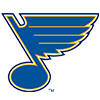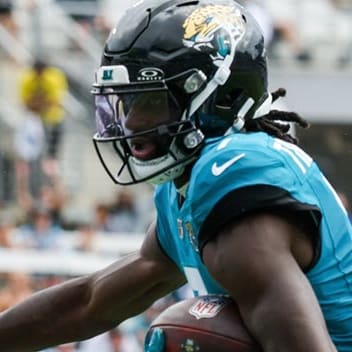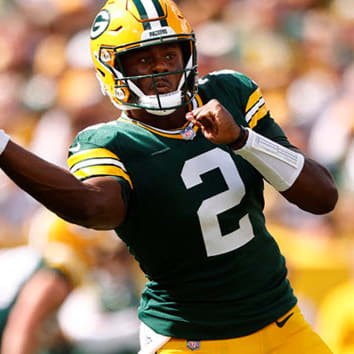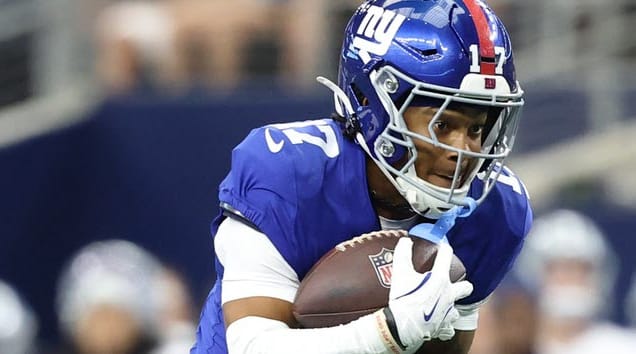Colts coach Shane Steichen met with his quarterbacks Tuesday morning to inform them that Daniel Jones will be the Week 1 starter (against Miami). Signed to a one-year, $14 million contract this offseason, Jones looked average this preseason but seemingly won over Steichen during practices to climb atop the Colts' QB depth chart. It helps that Jones has been healthy all spring and summer, whereas Anthony Richardson missed OTA practices with a shoulder injury and then left the first preseason game with a finger injury.
Richardson is only 23, with a cannon arm and 4.43 speed in a 240-pound frame, but he doesn't seem durable enough to truly make the most of his rare athleticism. He's also completed just 50.6 percent of his career passes — a number that's ugly even with his league-high 11.0 aDOT since entering the league. Richardson is talented enough to carve out a pro career still, but I'm not sure he can stay healthy while running 10 times per game, and there isn't any future for him with Steichen (one or both will be gone by next spring, in any case).
I asked #Colts HC Shane Steichen why Anthony Richardson struggled to develop and what role Steichen played in that lack of growth:
"The big part of it is he's been injured. … When you're not practicing and playing, it's hard to go out there and do the things you want to do." pic.twitter.com/ElPETv16pW
— James Boyd (@RomeovilleKid) August 19, 2025
For all his flaws, Richardson would've been more interesting than Jones as a lineup option in most fantasy formats, primarily on the basis of rushing projections (with a big gap in goal-line involvement). On the other hand, Jones looks better than Richardson in terms of supporting fantasy production for their Colts teammates, especially in PPR formats.
How Jones Impacts the Colts' Offense
Before Tuesday's announcement, RotoWire had Richardson projected for 10 starts and Jones for 7. We've since flipped that, and even switching just three games from one QB to the other has an impact on our numbers for Jonathan Taylor, Tyler Warren, Josh Downs and Michael Pittman. If we were to then project Jones for all 17 starts, it would move Downs and Pittman up from WR4 range to low-end WR3 status, with Warren going from TE10-12 range up to TE8-9.
That's because Richardson depresses the team projections for completions to a greater degree than probably any other QB in the league. Jones is no marksman, of course, and also turns dropbacks into sacks or scrambles (rather than pass attempts) at a fairly high rate, but he's not an extreme outlier like Richardson in terms of killing both pass volume and completion percentage.
An offense with Jones at the helm may not throw as many passes as one with Joe Flacco — who averaged 37.0 attempts in six starts for the Colts last year — but it'll likely be in the low 30s per game, with a completion rate in the low-to-mid 60s. With Richardson under center, you're probably looking at the mid-to-high 20s for attempts per game and a completion percentage below 60.
There's also a huge difference in projected average depth of target (aDOT), with Jones posting a 7.1 aDOT over the past two years (7.8 is league average) while Richardson was a yard and a half ahead (11.0 aDOT) of every QB. Alec Pierce may be sad to see Richardson on the bench, but anyone that relies on shorter targets — namely Pittman, Downs and Warren — just got a target boost and a slight catch-rate boost in our projections, albeit with slight dips in yards per catch to account for Jones' tendency to throw more short passes.
RB Jonathan Taylor also added a few targets and catches, plus he projects for a larger share of the goal-line work when Richardson isn't playing. However, the Colts could still use Richardson for short-yardage snaps even if he's not starting, and it's not like an offense with Jones at the helm will be visiting the red zone at an especially high rate. There's also the argument about mobile QBs helping rushing efficiency for RBs, but it's a bit harder to parse that out when both guys offer some degree of running ability.
Overall, I'd prefer Jones to be starting (rather than Richardson) if my only concern were Taylor's fantasy production. With Richardson under center, Taylor has averaged about 1.5 receptions per game. Before Richardson was on the team, Taylor averaged 2.4, 2.4 and 2.5 catches per game in his first three pro seasons.
How to Play It for Fantasy
We generally want players that peak later in the season, not early on, to prevent our fantasy teams from fading when it matters most in the playoffs (which is a factor you can check in RotoWire's new fantasy football draft assistant). That's certainly true for earlier picks, where we expect the players to be weekly starters. Once we get into the middle rounds, however, there are all kinds of things that can work in terms of roster construction.
Downs, Pittman and Warren aren't being drafted so early that a rough patch with Richardson under center would necessarily make them bad picks. If we know there's added risk of front-weighted production, we can pair these Indianapolis players with guys that are more likely to have back-weighted production, e.g., players coming back from major injuries (Chris Godwin, Stefon Diggs, Brandon Aiyuk) or talented rookies with uncertain Week 1 roles (Jayden Higgins, Luther Burden, Colston Loveland).
I mentioned something similar Monday with the Browns, noting that Week 1 starter Joe Flacco is the best choice to support fantasy production for Jerry Jeudy, David Njoku and Jerome Ford, all of whom will then be at risk of losing volume as the season progresses. That's another situation — and even more so than the one in Indy — where the recently named starter is unlikely to make it through the year unscathed.
One final note: Warren handled an every-down role with Jones and the first-team offense in the Colts' second preseason game, likely setting the stage for the first-round pick to be featured in the offense this September. We typically expect rookies to produce more as the season goes on, but that may not be true in Warren's case because he's starting off in a huge role already and could see his team's pass volume take a big hit if/when Richardson makes starts again.
Fantasy Expectations/Valuations
Daniel Jones: QB2 for superflex/two-QB leagues.
Anthony Richardson: bench stash for dynasty and two-QB leagues.
Jonathan Taylor: Low-end RB1, with slight boost in receiving projections.
DJ Giddens: Taylor's handcuff, minimal Week 1 usage.
Michael Pittman: WR3 or FLEX starter for Week 1, still on shaky footing season-long.
Josh Downs: WR3 or FLEX starter for Week 1, still on shaky footing season-long.
Alec Pierce: Late-round pick in best ball.
Adonai Mitchell: Struggling this summer, not close to Top 200 now.
Tyler Warren: Startable Week 1, should be at least a low-end TE1, with upside for far more.
Dominate your fantasy football league this season by exploring our ultimate draft kit. Packed with expert insights, rankings, and strategy tips, the kit features our interactive mock draft simulator to prepare you for every scenario. Streamline your draft-day decisions using our printable cheat sheet and stay ahead of the competition with our up-to-date rankings for all formats. RotoWire has everything you need to win. To learn more, subscribe now and start optimizing your roster today.









































